Prism orientation
Unlike cylindrical lenses where the axis of cylindrical lenses is noted from 0 to 180, prisms have a base direction throughout 360 degrees. Whereas, a cylindrical lens axis of 90 degrees is similar to 270 degrees but in the case of a prism if the base orientation is toward 90 degrees it is different from 270 degrees.
Prism orientation notation
360 Notation: It consists of the description of prism power and the base direction axis is given
E.g. 2 Δ base 65 degrees
180 Notation: It consists of the description of prism power, direction and axis with 0-180 degrees given. This type of notation is helpful when we need to place a prism in the trial frame where axis markings are given 0-180 degrees.
E.g. 2 Δ base in and up, base 65 degrees
It is important to understand when we describe a prism using any of the above notation, it is required to mention which eye it is. As for the right eye base direction, 180 degrees is Base OUT and for the left eye base direction 180 degrees is Base IN. Base orientation towards the nose is called Base IN and Base orientation away from the nose (temporal) is called Base out.
Conversion of 180 Notation to 360 Notation:
E.g. OS= 2 Δ base Down and Out, base 130 degrees
Step 1: Draw a Circle, divide the circle into 4 equal quadrants (vertically and horizontally) and specify the axis of the Circle. Remember axis always runs anticlockwise and will be similar for both the right and left eye.

Step 2: Look for two base directions which are given in 180 Notation and find out in which quadrant prism base direction is.
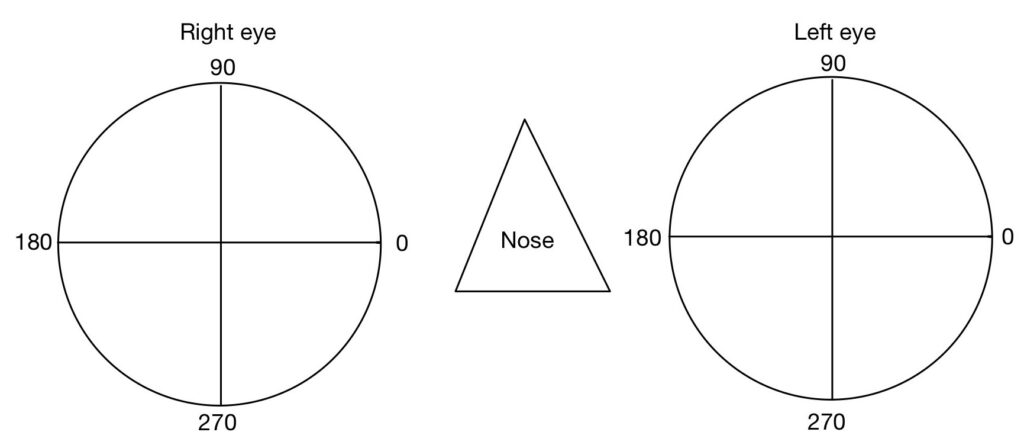
For the Right eye if two base direction is
- Base in and Base up = 1st quadrant
- Base out and Base up = 2ND quadrant
- Base out and Base down = 3rd quadrant
- Base in and Base down = 4th quadrant
For the Left eye if two base direction is
- Base out and Base up = 1st quadrant
- Base in and Base up = 2nd quadrant
- Base in and Base down = 3rd quadrant
- Base out and Base down = 4th quadrant
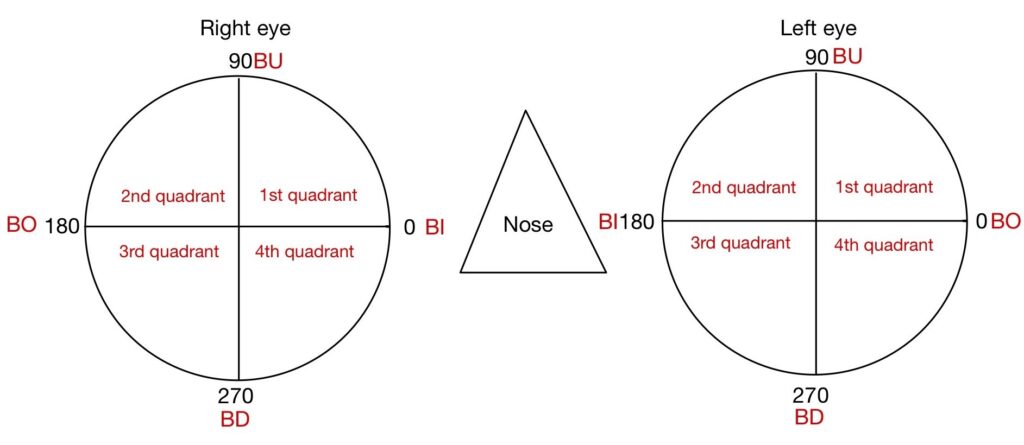
In the above given example: The eye is left and base direction (Base down and Base OUT). It falls in quadrant fourth.
Step 3: If the base direction is in the first or second quadrant, then the degree which is given to us in 180 Notation will be written the same in 360 Notation. If the base direction is in third or fourth quadrant then the degrees which are given to us in 180 Notation will be added by 180 degrees to find out the base direction orientation in 360 Notation.

As it falls in quadrant fourth, we will add 180 degrees.
130 + 180 = 310 degrees
Step 4: Mention Prism power and base direction orientation (degrees) which we found in Step 3.
OS = 2 Δ base 310 degrees
Conversion of 360 Notation to 180 Notation:
E.g. RE= 2 Δ base 320 degree
Step 1: Draw a Circle, divide the circle into 4 equal quadrants (vertically and horizontally) and specify axis of the Circle. Remember axis always runs anticlockwise and will be similar for both the right and left eye.
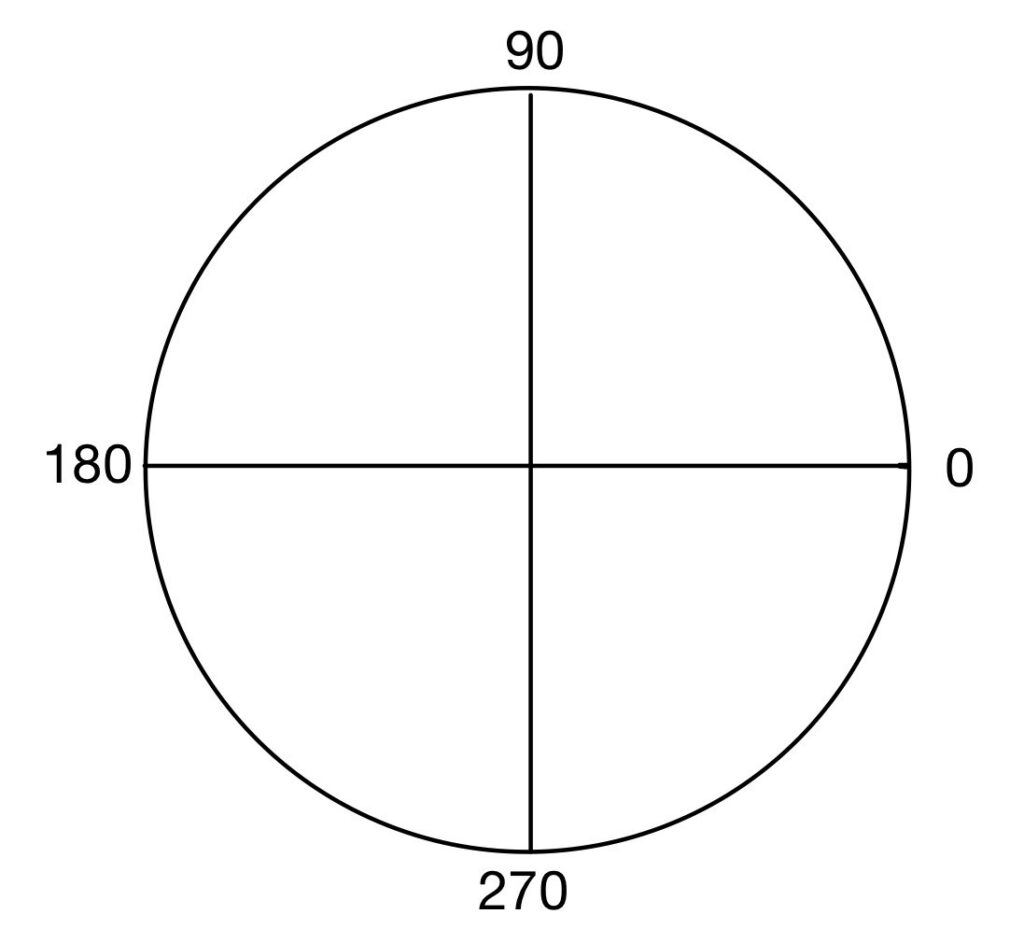
Step 2: Look for the base direction in degrees given in 360 degrees Notation and find out which quadrant prism orientation is.

For Right eye and Left eye:
- 0-90 degrees = 1st quadrant
- 91-180 degrees = 2nd quadrant
- 181-270 degrees = 3rd quadrant
- 271- 359 degrees = 4th quadrant
In the above example degree given is 320, so it falls in 4th quadrant
Step 3: Mention Base direction as Horizontal (Base in or Base out) and Vertical (Base up and Base down)
For the Right eye two base directions will be:
- 1st quadrant = Base in and Base up
- 2ND quadrant = Base out and Base up
- 3rd quadrant = Base out and Base down
- 4th quadrant = Base in and Base down
For the Left eye two base directions will be:
- 1st quadrant = Base out and Base up
- 2nd quadrant = Base in and Base up
- 3rd quadrant = Base in and Base down
- 4th quadrant = Base out and Base down
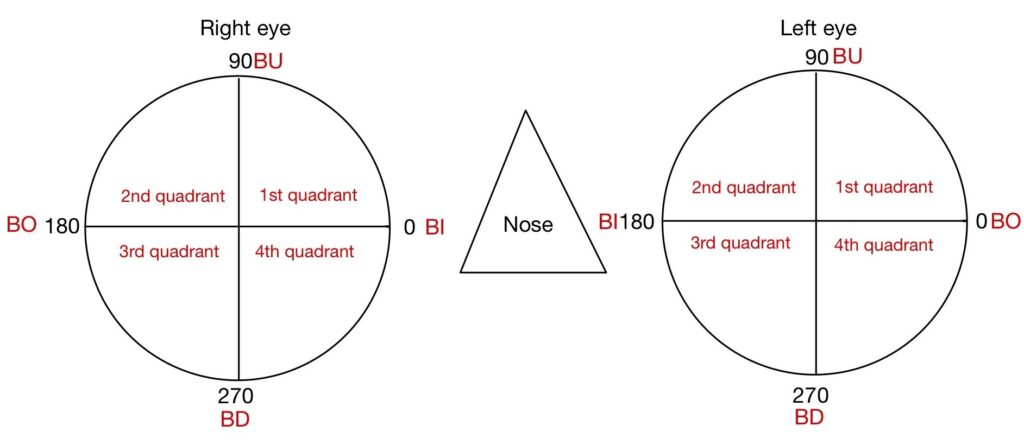
As it falls in the 4th quadrant so the base direction will be Base in and Base down
Step 4: Find prism orientation in 180 Notation:
- 1st quadrant = Same as 360 Notation
- 2nd quadrant = Same as 360 Notation
- 3rd quadrant = Degrees (360 Notation) – 180
- 4th quadrant = Degrees (360 Notation) – 180
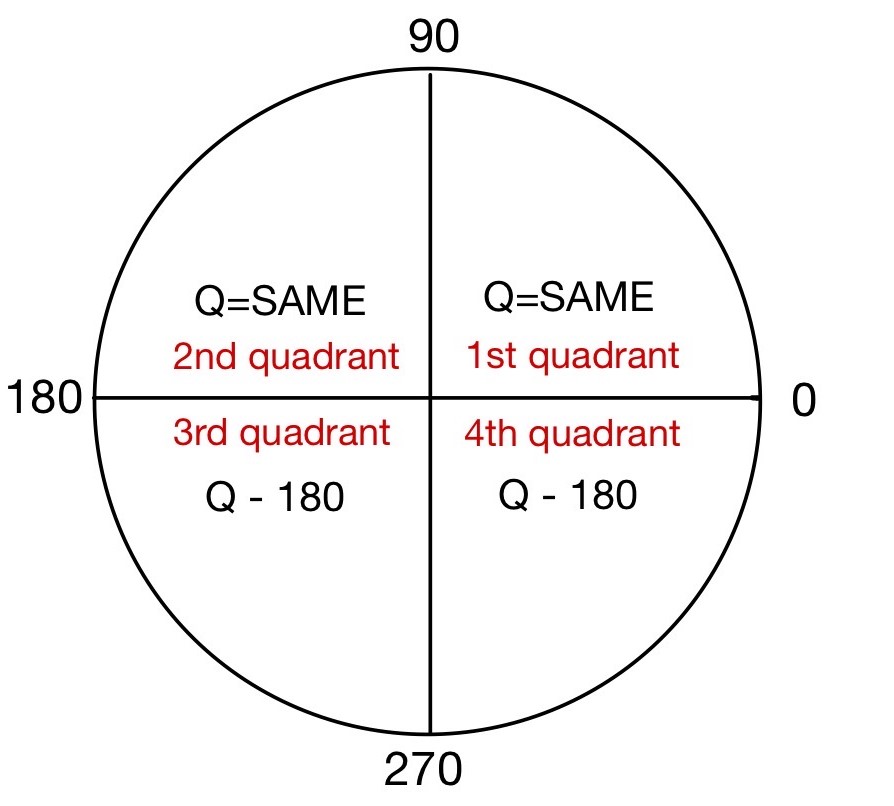
As it falls in the 4th quadrant so base Orientation in degrees will be Degrees (360 Notation) – 180
= 320 – 180 = 140 Degrees
Step 5: Mention Prism power, base direction as vertical and horizontal which we found in Step 3 and Prism orientation in 180 degrees which we found in Step 4.
2 Δ, Base In and Base Down, base 140 Degrees.
Lecturer (Nethradhama School of Optometry)
Moptom

